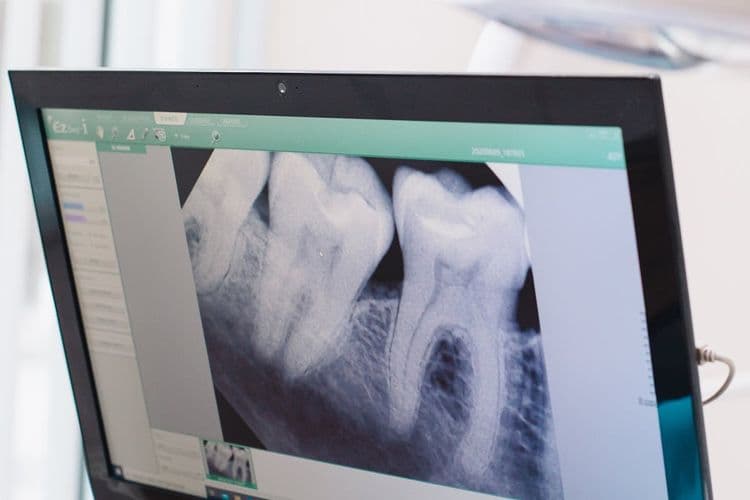Guided Tissue Regeneration (GTR) is an intriguing therapeutic method that leverages the body’s innate healing capacity to foster tissue regrowth, particularly in dental health and wound recovery. Utilizing biocompatible scaffolds, GTR effectively segregates quickly proliferating epithelial cells from their slower-growing periodontal counterparts, enabling precise regeneration and amplified healing results. Despite the promising potentials of this innovative technique in combating periodontal disease and augmenting the efficacy of dental implants, it is not without its challenges such as cost and procedural intricacy. Consequently, it becomes pertinent to further examine this topic and explore its future implications in the medical field.
Understanding Guided Tissue Regeneration
Guided Tissue Regeneration (GTR) is a progressive field within the domain of regenerative medicine. It harnesses the body’s innate cellular mechanisms to stimulate the growth of new tissue. This technique involves the use of tissue scaffolding, which serves as a temporary matrix for the growth and development of new cells. The scaffold not only provides a physical structure but also offers necessary biochemical cues to guide cell differentiation and tissue formation. GTR is employed in a variety of clinical applications, including periodontal disease treatment, bone repair, and wound healing. Understanding the fundamental principles of GTR is essential for its effective application and the development of new strategies for tissue engineering. This regenerative approach holds immense promise for the future of medical treatments.
The Science Behind GTR
Building upon the fundamental principles of GTR, it’s time to explore the scientific mechanisms that underpin this regenerative approach. The process involves complex cellular mechanisms that stimulate the body’s natural healing ability. Biocompatible materials are used to create a tissue scaffolding, which serves as a structure for new tissue growth. The scaffold fundamentally separates the rapid-growing epithelial cells from the slower-growing periodontal cells, creating a protected space for tissue regeneration. The selective barrier allows for the slower cells to proliferate without competition from faster-growing cells, ensuring the formation of quality tissue. The science behind GTR is an indication of the advanced understanding of cellular activity, tissue engineering, and the body’s innate capacity to repair itself.
Benefits of Guided Tissue Regeneration
A multitude of advantages are associated with the application of Guided Tissue Regeneration (GTR) in the medical field. Among the most prominent is enhanced healing; GTR accelerates the body’s natural repair processes by promoting the growth of specific tissue types over others. This targeted regeneration results in faster recovery times and minimal scar formation, improving patient outcomes. Another key benefit is the use of tissue scaffolding. This biocompatible material provides a spatially exact matrix for tissue growth, maintaining the integrity of the regenerating area. By guiding the growth of new tissues, GTR guarantees accurate and efficient restoration of the damaged area. Consequently, the application of GTR techniques offers substantial benefits regarding both healing quality and speed.
GTR in Dental Health
In the domain of dental health, the application of Guided Tissue Regeneration (GTR) is proving to be a game-changer. This technique is particularly useful in treating periodontal disease, a common ailment that can lead to tooth loss if untreated. GTR promotes the re-growth and repair of the periodontal ligament, cementum, and alveolar bone, structures often damaged by periodontal disease. Furthermore, GTR’s restorative potential extends to improving the success of dental implants. By fostering adequate bone formation around the implant site, GTR enhances implant stability and longevity. As a result, the integration of GTR into dental health strategies is not only beneficial for managing periodontal disease, but also essential in maximizing the outcomes of dental implant procedures.
GTR for Wound Healing
While the applications of Guided Tissue Regeneration (GTR) in dental health are remarkable, its potential in wound healing is equally significant. GTR techniques can effectively manage complex wounds, promoting faster healing and reducing scarring. By creating a physical barrier to isolate the wound, GTR encourages growth of specific cell types, enhancing tissue regeneration. For chronic wounds, GTR offers a promising solution, particularly in cases where conventional treatments have been unsuccessful. GTR also provides a novel approach to wound management, allowing for controlled, localized treatment. This minimizes potential complications and optimizes patient recovery. Hence, the implementation of GTR in wound healing not only exemplifies scientific innovation but also opens new avenues for improved medical care.

Potential Limitations of GTR
Despite the potential benefits of Guided Tissue Regeneration (GTR) in wound management and dental health, it is imperative to contemplate its limitations. One prominent drawback pertains to cost considerations. GTR procedures can be financially burdensome due to the high cost of biocompatible materials and advanced technologies required. Additionally, procedural challenges may arise, particularly in complex cases where the precise placement of membranes is necessary for successful tissue regeneration. Inaccurate implementation can lead to complications, including infection, membrane exposure, and insufficient tissue growth. Moreover, GTR may not be suitable for all patients, particularly those with underlying health conditions that may hinder the regeneration process. Consequently, while GTR holds promise, these limitations necessitate further research and innovation.
Future of Guided Tissue Regeneration
As we turn our gaze towards the horizon, the future of Guided Tissue Regeneration (GTR) appears to be rich with potential and opportunities for additional development. With the advent of future innovations and the continuous refinement of regenerative techniques, GTR has the potential to revolutionize the field of regenerative medicine. The prospective advancements in biodegradable materials, stem cells utilization, and gene therapy could considerably enhance the effectiveness of GTR. Moreover, the integration of bioinformatics and machine learning into GTR research could expedite the development of personalized treatment protocols. However, the success of these advancements will depend heavily on rigorous scientific research, overcoming regulatory challenges, and ensuring ethical standards in their application. The future of GTR holds promise, but it also demands cautious optimism.
Real-Life Applications of GTR
Numerous real-world applications of Guided Tissue Regeneration (GTR) are already in practice, indicating its wide-ranging impact and potential. Clinical case studies reveal its use in dental procedures, specifically in periodontal disease and bone loss. GTR techniques, using biocompatible membranes, encourage natural bone growth and prevent unwanted tissue formation. Additionally, GTR has proven beneficial in regenerative medicine, especially in the repair and regeneration of damaged skin and organs. For instance, it has been used in treating burns, ulcers, and even in heart repair post myocardial infarction. The real-life applications of GTR demonstrate its potential to revolutionize health care, paving the way for advanced, effective, and minimally invasive treatments.
Frequently Asked Questions
What Is the Cost of Guided Tissue Regeneration Treatment?
The cost of this specific treatment can greatly vary, depending on the complexity of the case. Treatment expenses may be mitigated through insurance coverage or financial assistance programs, depending on the patient’s individual circumstances.
Are There Any Risks or Side Effects Associated With GTR?
Yes, there can be potential risks or complications with any surgical procedure. GTR complications may include infection, bleeding, gum recession, and root sensitivity. Contraindications include heavy smoking and certain systemic conditions.
Is the GTR Procedure Painful?
The procedure in question may cause discomfort, however, effective pain management strategies are typically employed to enhance patient experiences. The degree of pain can vary, but is usually manageable with appropriate post-procedure care and medication.
How Long Is the Recovery Process After GTR Treatment?
The recovery timeline post-treatment typically spans several weeks. However, this largely depends on the individual’s overall health. The healing process involves careful monitoring and follow-up appointments to guarantee ideal recovery and prevent potential complications.
Is GTR Treatment Covered by Health Insurance?
The coverage of specific treatments largely depends on individual insurance policies and their respective coverage limitations. It is advisable to consult with your healthcare insurer directly to ascertain accurate information about your policy’s coverage.


